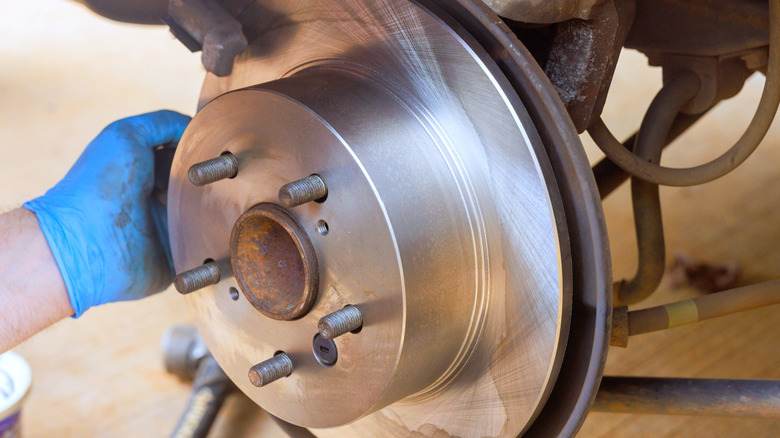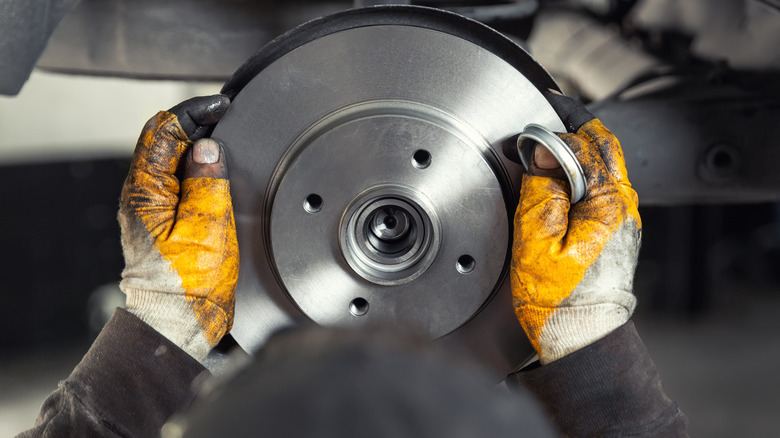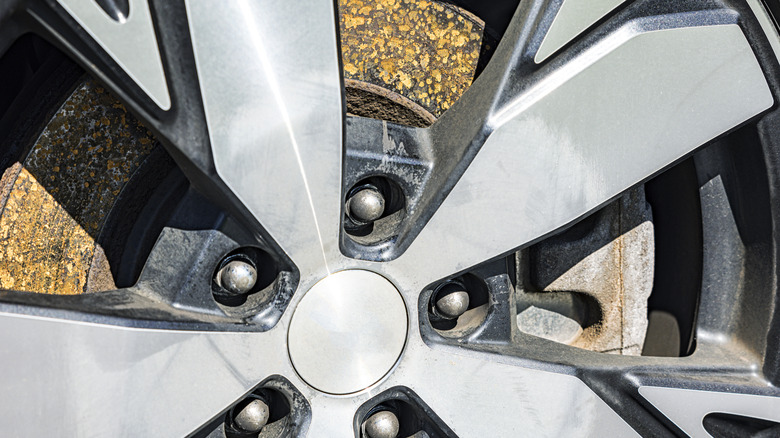What Are Zinc-Coated Rotors And Are They Worth The Price?
One thing I've learned after spending too much time and money at car auctions is that the brakes on vehicles I've purchased this way often need replacing. It's striking to see the condition of some rotors that come off these cars. Sometimes, removing them requires subtle persuasion (also known as using a hammer) because the deterioration is so bad. In these instances, the underlying reason is usually cheap rotors — the previous owner decided to save a few bucks. Adding zinc-coated units could have eliminated the removal hassle, extended rotor life, and helped with aesthetics.
If you need a primer, a brake rotor is attached to each wheel and integral to the braking process. When the brake pedal is pressed, hydraulic pressure squeezes the brake pads against the rotors. This friction slows down the wheels and stops the car. Old-school brakes use drums and shoes instead of the rotors and pads found in more modern vehicles.
While high-end rotors are made from exotic materials like carbon or ceramic, everyday rotors are made from iron, and some may use steel. These metals are inexpensive to manufacture and do a good job of dissipating heat from friction. Yet, without a zinc coating, these rotors are vulnerable to rust.
How zinc coatings prevent corrosion and extend rotor life
The primary reasons for buying zinc-coated brake rotors are corrosion resistance and improved longevity. Cast iron units are susceptible to rust, especially in regions with high humidity or where road salt is part of winter driving. Over time, this rust can seize the rotor to the wheel hub, making replacements a headache (which is when the hammering comes into play). In addition, corrosion can build up on the cooling vanes (the vent area between the front and back of the rotor). This rust accumulation impedes the cooling process, increasing the risk of rotor warping.
A zinc-coated brake rotor has a thin, protective barrier on non-friction surfaces that minimizes the oxidation process. This layer comes in different forms, such as electroplated zinc, which adds a silver finish. You may also encounter rotors treated with Geomet, a zinc and aluminum coating that gives the surface a gray, flaky appearance. There are also polymer-based rotor coatings that combine zinc particles with a synthetic resin.
Regardless of the type, these zinc coatings protect the areas of the rotor that aren't touched by the pads. This includes the vanes, hub face (sometimes called the hat), and outer edge. Some drivers mistakenly assume rotor rust is just cosmetic, but this is a common brake myth. It can actually lead to warped rotors and reduced braking performance.
Improved looks and a reasonable price difference
While every driver may not care about a car's appearance, those who do will want zinc-coated rotors, especially if the vehicle has open-spoke wheels. Otherwise, the rotors and any rust developed on the edges or hat are easy to see. Zinc-coated rotors provide a consistent, clean look, even after repeated exposure to moisture and road grime.
The upgrade to zinc-coated rotors doesn't have to break the bank. Some comparison shopping on RockAuto.com reveals a modest cost difference. Using Raybestos products (a solid, mid-tier brand) as an example, basic (non-coated) R-Line rear rotors cost $22.99 each for a 2016 Ford Mustang. Stepping up to the company's premium Element 3 line, with a zinc and aluminum coating, raises the cost of an individual rear rotor to $33.99. The spread with the same Raybestos rear rotor models is even less with a 2020 Toyota RAV4: $22.79 for uncoated versus $27.79 for coated. That modest extra cost per wheel can delay the need for a brake job and rotor replacement.
Of course, not every coated versus uncoated rotor price comparison will be separated by a few bucks, especially if you're shopping for different brands. However, it's always worth checking out how much extra the step up to zinc coating costs.


